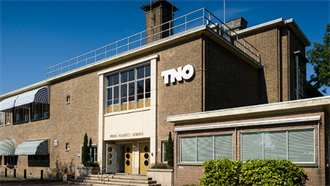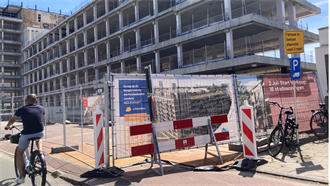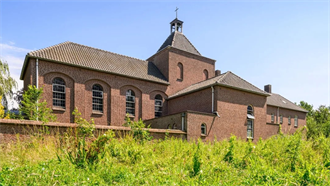In a world assailed by the global credit crunch, highly leveraged real estate is not exactly a safe haven. The British are therefore keeping a low profile, but how attractive are bricks and mortar in the Netherlands? This is a brief review of the main players in the market based on eight surveys conducted by PropertyNL. by Wabe van Enk PropertyNL Magazine 10 maart 2008 nr. 4
In a world assailed by the global credit crunch, highly leveraged real estate is not exactly a safe haven. The British are therefore keeping a low profile, but how attractive are bricks and mortar in the Netherlands? This is a brief review of the main players in the market based on eight surveys conducted by PropertyNL.
by Wabe van Enk
PropertyNL Magazine 10 maart 2008 nr. 4
The Netherlands has always been best known
among international real estate players for its
architects. That is still true today. Prada New
York was designed by Dutch architect Rem
Koolhaas. His compatriot Erick van Egeraat
designed the islands in the Black Sea for the
Russian province of Krasnodar.
Financial insiders are familiar with the Dutch
frugality and the legendary size of the pension
funds. The public sector pension fund ABP,
the health sector pension fund PGGM, the
metal industry pension fund MN are among
the largest in the world. The Netherlands also
has a large financial sector, with bank and
insurance company ING the market leader
in global real estate with its combination of
financing, development and investment. Architects
and financial institutions in the Netherlands
typically find very quickly that the
Dutch market is too small. More recently, the
same has applied for developers.
The question that this internationalisation
raises is what is left for international players
in the Dutch market? Quite a lot actually.
The internationalisation is a consequence of
the desire to spread risk. In addition to expanding
operations to other countries, that
also means opening up your own borders
to outsiders. The prime example of that last
year was the acquisition by Royal Bank of
Scotland, Spain’s Banco Santander and Belgium’s
Fortis of ABN Amro, the Netherlands’
largest bank, in what was a unique event in
the history of European integration.
Integration has been a facet of the real estate
marker for some time. Despite the large
flow of institutional funds from Dutch pension
funds and insurers, more than 60%
of the commercial real estate investment
market in the Netherlands is controlled by
foreign businesses. And it’s not because the
Dutch want to palm off the rubbish they
don’t want to international investors. German
players in particular have traditionally
secured better returns in the Netherlands
than in their domestic market.
The policy of ABP, the largest pension fund,
is always to take minority positions in the
Netherlands, preferably with foreign partners
in large projects. This is a public secret,
but it avoids ‘French situations’. The French
government uses only French companies,
banks and pension funds for area developments.
The Netherlands likes to maintain
a strict separation between business and
politics and ABP therefore wants to ensure
that the pensions of public servants are not
used for political purposes. At the same time
the Dutch are envious of the way the French
manage their TGV, protect their national
companies or swallow Dutch companies like
KLM. In the Netherlands ABN Amro simply
failed to meet an internal benchmark.
This businesslike, unchauvinistic philosophy
offers plenty of opportunities for foreign
investors. The Anglo-Saxon parties have
their own problems and will have little interest
in the Dutch market in 2008, but wellcapitalised
European parties (especially Germans)
may still consider their prospects in
the Dutch market, either directly or indirectly
through listed or unlisted funds. Transparency
means that local knowledge, the key factor
in real estate, is also available to foreign
businesses. Nowhere is information about
supply, transactions and planned volume as
widely available as it is in the Netherlands,
according to comparative studies by our international
sister publication PropertyEU.
PropertyNL and PropertyEU carry out further
surveys every year. This issue includes the
rankings of the players that really count, be
they investors, developers or financiers, but
also of the leading estate agents, architects
and lawyers. The rankings are generated by
systematic and transparent research, usually
based on checklists distributed to principals,
authorities, national and international investors
and end users. Even participants at a fair
like MIPIM need the guidance lists like these
can provide. The most important parties don’t
always have the biggest stands, so a series of
rankings regardless of the size of the stand or
the advertising budget can serve as an important
tool for an international audience and a
reality check for the Dutch in-crowd.

















